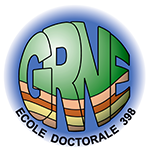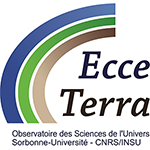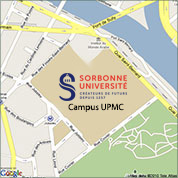Séminaire ISTeP - Joshua Garber
(Penn State Univ.)
Why Does Some Subducted Continental Crust Escape Deformation and Transformation?
Titanite geochemistry and geochronology from the Western Gneiss Region (WGR) of Norway shows that large portions of continental crust were deeply subducted and exhumed without significantly deforming or reacting, indicating heterogeneous mechanical behavior of crust at mantle depths. Titanite is stable in granitic rocks over a significant P-T range, and contains numerous major, minor, and trace elements that record 1) P-T conditions, 2) interactions with other major and accessory phases, and 3) information about the composition of coeval melts and fluids. A large titanite LA-ICP-MS dataset from WGR granitic gneisses and leucosomes yields a record dependent on textural setting: some titanites formed after the decomposition of other phases at mantle depths, but other titanites preserve inherited isotopic dates and chemistry with variable recrystallization at grain rims. Differences in rock textures, as well as changes in volatile abundances (F and OH) among different titanite populations, suggest that the persistence of crustal minerals at mantle depths is coupled with limited prograde fluid infiltration, which restricted the efficacy of metamorphic reactions, increased rock strength, and caused heterogeneities in the density and viscosity of the subducting slab. Pervasive peak to retrograde hydrous fluid flow through these dry crustal domains was unable to erase the rheologic heterogeneities imparted during prograde metamorphism, likely preventing significant internal deformation of the slab. Finally, our statistical approach shows the utility of dimensional reduction in geochemical studies: rather than comparing individual element or isotopic abundances or ratios, principal components or discriminant analyses can condense variables and help efficiently distinguish between distinct geologic agents or geochemical reservoirs.
06/07/2018, Salle Thétys (56/66, 3ème étage) à 12h30
Chiffres clés (Mars 2025)
L'ISTeP comprend 131 membres dont :
Permanents (66)
- Professeurs : 17 (+2 PAST)
- Maîtres de conférence : 26
- Directeurs de recherche CNRS : 1
- Chargés de recherche CNRS : 1
- ITA : 19
Personnels non permanents (65)
- Collaborateurs bénévoles / émérites : 17
- Chaire de professeur junior : 1
- Enseignants-chercheurs contractuel : 2
- 1 MCF accueil en délégation
- ATER et Post-Docs : 9
- Doctorants : 32
- ITA-BIATSS : 3





